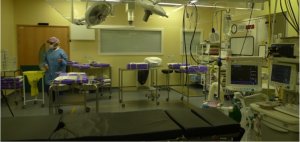The surgical management of Cancer cell removal today relies on a somewhat generalised process that is less personalised than some top surgeons hypothesise is optimal. In specific anatomical areas, there was no way to tell how much tissue to remove, and the results on outcomes are being quite varied.
The medtech company we were brought in by set out to create a device that would offer a different approach, which could potentially impact clinical practice for the millions of sufferers around the world; whose numbers continue to rise.
They set out to innovate in medical imaging, via an intra operative probe that would enable better judgement of which tissue to remove, thus increasing precision. We were engaged to resolve what the device should be and what it should do.
Firstly, we helped them design and deliver the initial research with 20+ surgeons, observing procedures (mainly robotic surgery) in the UK, US and Europe to understand current practice, current concerns and how they saw the use and value of the device.

The research challenged many of the initial assumptions, and the results were surprising.
Major design decisions were informed by that research and it informed the creation of the whole usability engineering file from scratch. This included the use specifications (regulatory documents), through usability development to a submission-ready file. Our specialist Chartered Human Factors know how and a background in medical device development, enhanced by work in the robotics labs at MIT meant our skill fit was quite unique.
The TEN difference: Holistic engagement with the Human Factor always in mind.
Are you are our next TEN member? Apply today.